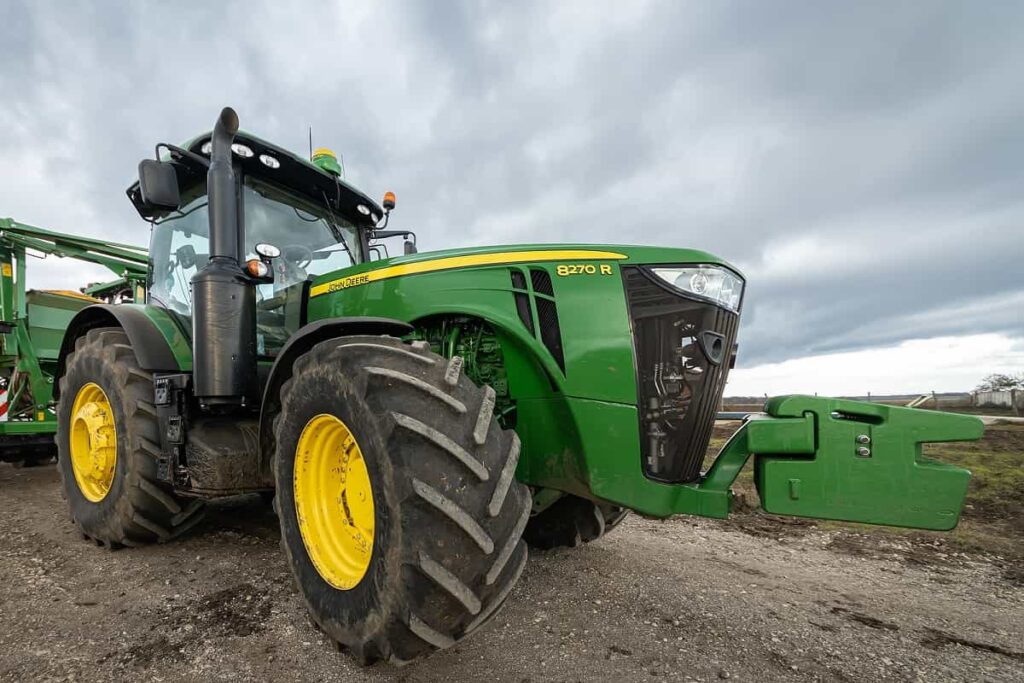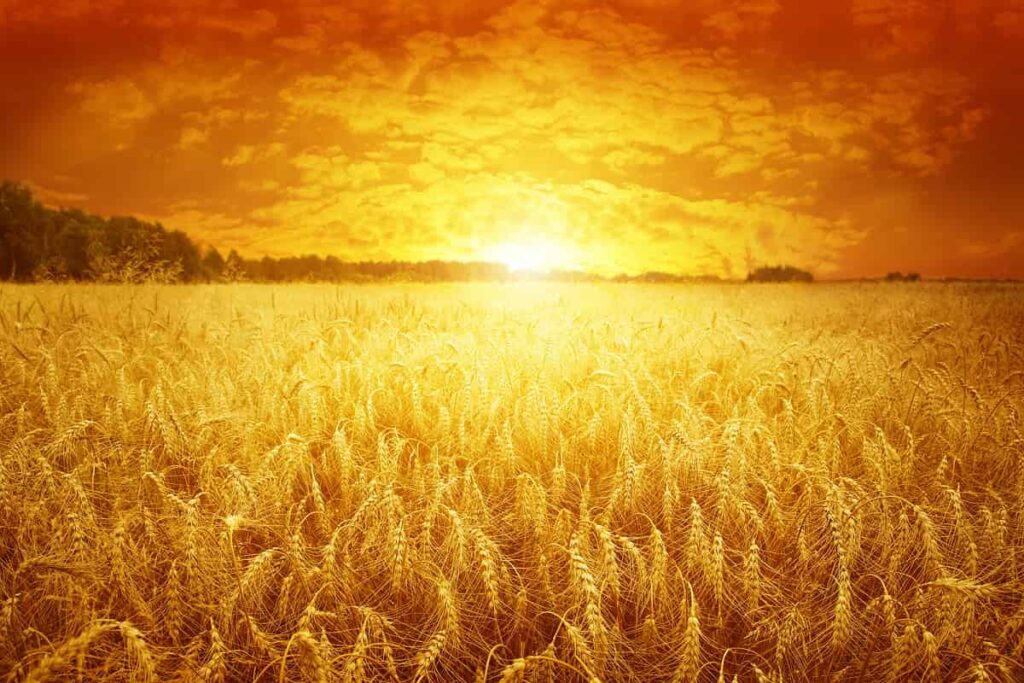9 Agriculture Technology Startups to Keep You Fed
Table of contents

The term “food security” is another way of saying that we might not have enough food to feed everyone on this shrinking planet. According to The World Bank, we need to produce at least 50% more food to feed 9 billion people by 2050. Any sort of problems we may encounter along the way need to be considered. Climate change is expected to reduce crop yields by 25% before 2050. What’s that you say? You don’t believe in climate change? Well let’s put it this way. Wouldn’t that be horrible if we went about taking care of our planet and then discovered climate change was a myth? (See what we did there?) Climate change is entirely irrelevant. Cleaning up after ourselves on the planet, making sure we don’t kill other species, and making sure everyone is fed are all relevant goals. Agriculture technology will ensure the most basic of Maslow’s needs are met by making sure that we all have some nutritious food on the table every night.
Farming isn’t the most sexy investment topic but when you throw in cool technology like artificial intelligence or drones, then things start to get a bit interesting. Here’s a look at some leading edge applications of technology in agriculture.
Farm Management Solutions
Founded in 2012, Ann Arbor Michigan startup has taken in a total of $37 million in funding to apply “cutting-edge technology to the world’s oldest and most foundational industry“. What this means is that FarmLogs wants to collect as much “big data” as possible from the farming industry and then use it for making better decisions. The fact that FarmLogs was founded by two farmers explains why 1 in 3 farms is now using their farm management solutions, an area that covers 65 million acres of farmland. The base software is free for all farmers to use but you’ll need to pay in order to unlock additional features. The full solution is priced at $10 per acre and analyzes your fields for all kinds of cool farmer type stuff:
You can even have the tool send you alerts when there are problems with your crops. From an investor’s perspective, they’ve achieved something incredible with a 33% market penetration in just 6 years for the world’s most ancient industry.
Farming Big Data
Founded in 2014 by computer scientists, Israeli startup Prospera has taken in a total of $7 million to “reinvent the way data is used in agriculture“. Prospera has developed a cloud-based solution that aggregates all of the existing data that farmers have like soil/water sensors, aerial images, etc and then combines it with an in-field device that makes sense of it all. The solar-powered Prospera device can be placed in the field or in greenhouses and uses a variety of sensors and computer vision to analyze all kinds of things that farmers care about:
The technology is already being used on farms and Prospera’s clients include farms that supply giant grocery companies like Walmart, Tesco, and Sainsburys along with a waiting list of future clients.
Computer Vision and Lettuce
Blue River Technology was featured before in our article titled “13 Computer Vision Companies You Need to See” and also made the CB Insights AI 100 list. Founded in 2011, this Sunnyvale California startup has taken in a total of $30.5 million in funding to combine artificial intelligence, computer vision, and robotics to build the next generation of agriculture equipment that reduces chemicals and saves costs. This thing can actually see weeds and then spray them:
If you’re eating lettuce while reading this, there’s a 1 in 10 chance that Blue River had their robot fingers all over it. They are now looking at adding drones to their solution which promises a 90% reduction in pesticides which represents $45 billion in savings. That is simply incredible and the fact that we’re not celebrating this accomplishment as humans, but instead, choosing to vomit political drivel all over the internet, is perhaps the most compelling explanation for why aliens don’t want to speak to us.
The Internet of Herds
Founded in 2015, Colorado startup Herddogg not only has a cool name but a very cool idea. What about smart tags for cows that allow you to monitor your herd via the cloud? This would allow you to see where your herd is at all times, what areas of the range the cows migrate to throughout the year, and technically, it could even tell you when the cows are breeding. Apparently, tagging your cows using RFID isn’t exactly a new idea, but with all the problems encountered by farmers, HerdDogg hopes to create a best-of-breed solution that addresses all the pain points. With just $750K in funding they’ve managed to procure the full solution seen below:
You can get your hands on some tags today and venture capital firms should note they’re looking to raise a Series A of $1-2 million this year. Get yer “cow cloud” on dogg.
Update 01/15/2021: HerdDogg has raised $4 million in Series A funding to accelerate market adoption of its patented solution. This brings the company’s total funding to $7.5 million to date.
Microbiomes in Farming
A cursory search on Crunchbase shows that Indigo took in the largest funding round in 2016 ($100 million) of any agriculture technology startup. Founded in 2014, Massachusetts startup Indigo has taken in a total of $156 million in funding to “help farmers sustainably feed the planet”. Remember how we talked about all the microbiomes that are part of the human body? The same thing is true for plants, and Indigo works to identify the most beneficial microbes and then cultivate them to enhance plant performance. They already have two products out help plants better utilize water:
Indigo Cotton was tested on 50,000 acres across 21 sites in multiple states. The end result was 10% better yields which pretty much seals the deal. Now they’re moving on to wheat with the first acres to be planted this fall.
The Internet-Of-Farms (IoF)
Founded in 2012, Australian startup AgDNA has taken in an undisclosed amount of funding to develop a platform that tracks “location-based job activities”. In simpler terms, they have a product that integrates directly with tractors and other pieces of farm equipment and derives big data during vehicle operation.
You can track things like bushels harvested, acres planted, or diesel fuel consumed. AgDNA doesn’t have to sell to farmers directly as they are currently working to implement their product with equipment manufacturers. Most people don’t know that John Deere has been selling self-driving tractors for 15 years now. In the future when all your farm equipment is operated by robots, this software will help you make sure they aren’t horsing around on the job.
Come and Try to Track Your Crops
Founded in 2009, Arizona startup CropTrak has taken in a total of $700K in funding to develop a full life-cycle platform that enables “traceable food”. While their website doesn’t say much about their solution, the basics can be seen below:
This family run business is not only profitable, but they have +500 loyal customers with a 96% renewal rate since 2009.
Biological Insecticides
Founded in 2001, Michigan startup Vestaron Corporation has taken in $49.2 million in funding to produce insecticides that employ peptides sourced from spiders. Weird as that sounds, it’s all about going organic.
When you go through airport screeners and they swab your bag, they’re not looking for that bag of skunk you “forgot you had”. They’re looking for chemicals used in explosives like fertilizers. Farming chemicals like fertilizers and insecticides are just plain nasty. We need to go organic and we need to do so in a cost effective manner so that thin-margin farming can accommodate it. Vestaron has developed a product line of bioinsecticides called “Spear”:
These insecticides take advantage of the potent insect killing peptides used by spiders to kill insects but are environmentally friendly and safe for humans, birds, fish, and even bees.
The Business of Farming
Founded in 2014, San Francisco-based Granular has taken in $25 million from a slew of investors which iuncluded the likes of Google Ventures (GV) and Andreessen Horowitz. The best way to describe Granular’s offering is that they take a holistic look at your farm and help you operate it as a business. Just look at how slick this screen is that breaks down all the costs associated with your farming business:
Perhaps one of the coolest features they offer on the platform is AcreValue which uses all the big data generated from their platform to determine land valuations for farming fields. Still, it doesn’t matter how slick your software is, you still have to get out there and convince farmers to use it and pay you for it.
Conclusion
So there you have 9 agriculture technology startups working on some very exciting things that will help keep us all fed. Ever since Monsanto bought Climate Corporation (the first Agriculture technology unicorn) for $1.1 billion back in 2013, investors have known there is a lot of money to be had in “agtech”. In addition to outdoor agriculture technology, the surge in cannabis legalization has also helped to stimulate new advances in agtech driven by creative stoners with lots of motivation. There are 100s of companies out there working on agriculture technology. If we see enough interest in this article we’ll look to dig a bit deeper into agriculture technology investment opportunities in coming articles.
Sign up to our newsletter to get more of our great research delivered straight to your inbox!
Nanalyze Weekly includes useful insights written by our team of underpaid MBAs, research on new disruptive technology stocks flying under the radar, and summaries of our recent research. Always 100% free.

























New technology is wonderful but an important prerequisite is that it must be applied to increase the profitability of food production because it is the only way that food security can be sustainable. It means that new technology must support farmers to produce more products with the same level of inputs or produce the same quantity of products with fewer inputs, efficiency ratio. This is one of the two main drivers of profitability. The second one is perhaps even more important and that is the ratio between the prices that farmers pay for their inputs and the prices that they receive for their products, the input/output ratio. By ignoring the major thrust of the input/output price ratio is the main reason why small subsistence farmers will not develop as fully fledged commercial farmers and it is undoubtedly also the most important reason why Africa will never be in a position to produce enough food for himself. The correct application of these two drivers in combination is known as the “optimum level of production” which is the most important principle that determines the highest profitability and sustainability of commercial agricultural production as it also incorporates all the other agricultural disciplines.
Thank you for a very well thought comment Fanie.
Farmers are perhaps the most “old school” when it comes to how they conduct their operations. They would be very reluctant to take on anything new that didn’t have a favorable answer when plugged into the equation you have presented.